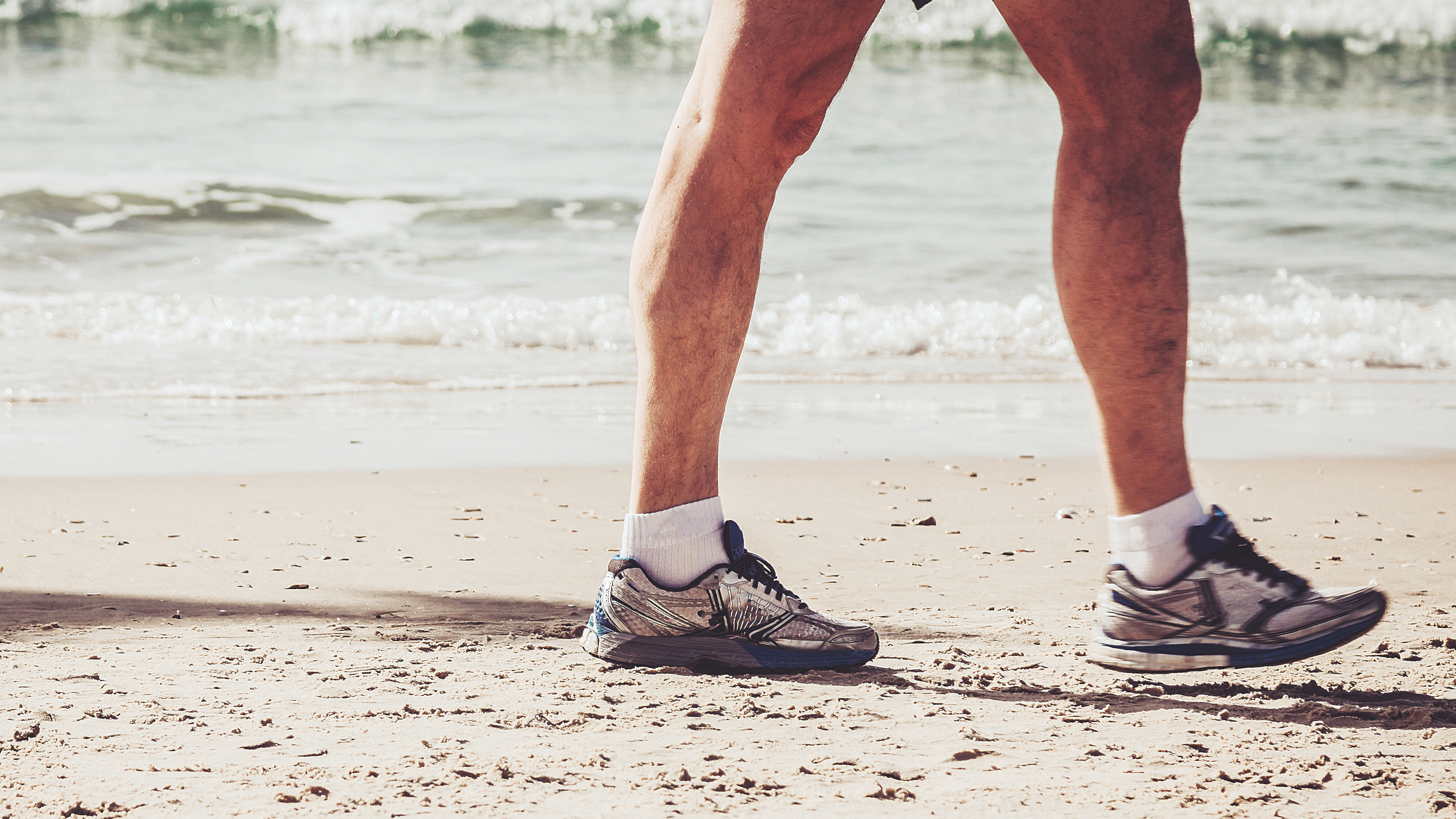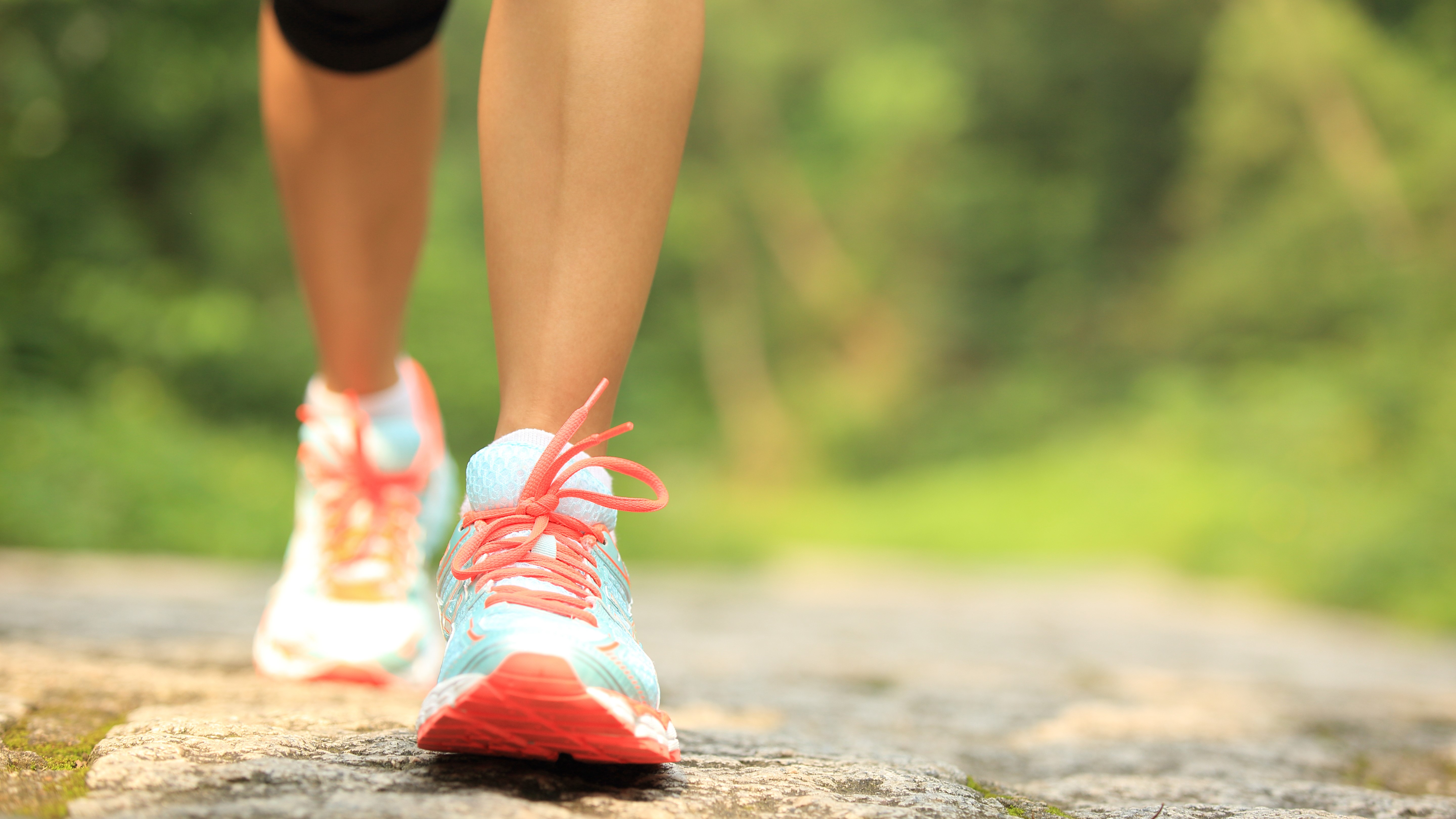I tried walking backwards every day for 30 days — here's what happened to my body
From easing knee pain to giving my brain a workout — who knew walking backwards could offer so many benefits?

There’s a saying: “Go backwards to spring forward.” I never really got it until I started literally walking backwards.
It all clicked when I was recovering from eye surgery and looking for ways to stay active without overdoing it. I could’ve hopped on one of the best treadmills, but knowing myself, I’d have pushed the speed too fast. Instead, I took a different approach — walking backwards. It slowed me down, but surprisingly, my health sped up. Who knew?
It might seem like just another fleeting social media trend, but backwards walking (also known as “retro-walking” or “retroambulation”) is widely recognized for its holistic benefits — from building physical fitness to improving mental clarity — which explains why it’s making waves in gyms and on social media, too.
If you’re curious about the buzz, here are seven things I learned from lacing up my sneakers and doing things backward.
How I did It

For 30 days, I followed the advice of personal trainer Francisco Torres and challenged myself to walk backwards on my treadmill for about 15 to 20 minutes using an incline; I started with 10% and a speed of 2mph, carefully reaching back with my big toe and rolling through the foot from toe to heel.
At first, I held onto the handrails for balance, but as my confidence grew, I let go, using a mirror in front of me as a guide. What amazed me was how quickly I started to notice small but significant improvements: my balance and spatial awareness sharpened, and my legs — especially my hamstrings, glutes and calves — felt strong.
I even picked up a little speed as the challenge progressed, but not nearly as much as French athlete Guillaume de Lustrac, who ran an entire marathon backwards in just three hours, 25 minutes and 24 seconds. Impressive, but I think I’ll leave breaking any records and marathons to the experts.
7 things I learned from backwards walking in 30 days
1. I worked my muscles differently
After just a few days, I noticed soreness in my glutes, calves and hamstrings — muscles I don't typically target in my regular walking or running routine. I even felt it in my heels, which was unexpected.
As someone who regularly walks 15,000 steps and enjoys strength training, DOMS (Delayed Onset Muscle Soreness) in new places always feels like a good sign; this meant I’d worked muscle groups in new ways, which is a positive for progression and improving overall strength.
2. My balance and posture improved
Backwards walking is often praised for improving balance. After 30 days, I can confirm it’s true. This movement challenges your proprioception, requiring your brain to process more information than it typically does when walking forward. Over time, this can even improve reflexes and overall stability.
As for posture, walking backwards forces you to stand tall with your core engaged, chest lifted and shoulders back. It’s much harder to slouch when you’re walking in reverse, which encourages better posture. In fact, leaning forward while walking backwards can make you feel like you’re about to fall, which is a good reminder to keep your body aligned and stable.
3. I still burned calories and worked my cardiovascular system
The research shows that walking backwards can increase energy expenditure by making your body work harder.
Compared with forward walking, it may place greater demands on your cardiovascular system, metabolism and muscle coordination; this extra effort could mean more calories burned.
However, it’s worth mentioning that overall calorie burn is individual, so there’s no guarantee that everyone will experience the same benefits. And as we know, the type of walking you do (incline, speed, terrain and length of time) matters.
That said, the unnatural motion of walking backwards required more brain power and core strength from me. I found the activity also raised my heart rate and gave my body a solid workout, including for my cardiovascular fitness.
4. My knees felt stronger

As my eyes healed, I also noticed my knees becoming stronger, which laid the foundation for when I could run again. Walking backwards gave me confidence that I was strengthening the muscles supporting and surrounding my knees, also altering the range of motion for my joints and muscles.
Because the movement engages the glutes, it can help relieve some of the pressure on the knee joints. Unlike forward walking, when your knees bear the brunt of the load, the reverse motion may reduce strain.
While I’ve never struggled with knee pain, studies involving healthy individuals have shown that walking backwards can positively affect gait and balance, minimizing joint strain.
I’ve found a low-impact way to strengthen my legs while improving lower-body endurance — and I’ve been recommending it to friends ever since.
5. I still got the quad burn
I’ve always been a "quad girl" — I’m an ex-national gymnast, after all. It doesn’t take much to get a good quad burn, and walking backwards does the trick by placing a greater emphasis on these essential muscles for knee joint support.
Research published in BMC Musculoskeletal Disorders found that participants who walked backwards three times a week for six weeks saw improvements in their quadriceps strength compared to those who walked forwards. I’ll gladly take those results!
6. It kept me flexible and my lower back pain-free
One of the most noticeable benefits of walking backwards during this challenge was how it activated my hamstrings and helped reduce lower back pain.
A 2018 study supports this, showing that walking backwards activates the lumbar paraspinal muscles (the ones that support your spine). This is one reason why physiotherapists often recommend backward walking for low back rehabilitation.
Walking backwards also changed the range of motion of my joints and muscles and stretched my hip flexors, which, if tight, can contribute toward back pain. Sound familiar? I’m guilty of sitting too much, especially during my recovery; sitting too long weakens and tightens the hip flexors, which can lead to lower back strain over time.
7. It helped me stay more present
One of the unexpected benefits I found was the mental focus it required. I stayed more present and mindful of my technique, something I often forget when walking forward. We've all witnessed those treadmill walkers glued to their phones, right? I’m guilty of that too. But when walking backwards, your focus must be on the task at hand.
This rang especially true when I did it in the morning. It helped wake me up, boosting my cognitive function, concentration and coordination. I felt more mentally sharp and ready to take on the day.
Verdict
Backwards walking for 15 minutes every day was a fantastic test and new focus for me. It prevented me from overdoing it on the treadmill while still allowing me to get my steps in, all while engaging my lower body and core.
After years of marathon and half-marathon training, I appreciated the break for my knees and hip flexors. Plus, it was refreshing to focus on something positive for mental clarity and concentration.
If you’re looking to spice up your gym routine and enhance your balance, backwards walking is an interesting adjustment to your routine. Will I continue? Absolutely. I love incorporating tweaks to my training.
More from Tom's Guide
- Here's what 30 minutes of walking each day can do for your body
- I took a mindful walk every day for a week — here's how it changed my mind and body
- Forget the gym — this 30-minute walking workout builds mental strength and boosts your metabolism
Sign up to get the BEST of Tom's Guide direct to your inbox.
Get instant access to breaking news, the hottest reviews, great deals and helpful tips.
Lucy Miller is a Journalist, Level 3 Personal Trainer, Nutritional Advisor and Children’s Fitness Specialist. She holds fitness qualifications from NASM Training and Premier Training International and has been a fitness journalist and model for over 20 years.
You must confirm your public display name before commenting
Please logout and then login again, you will then be prompted to enter your display name.











